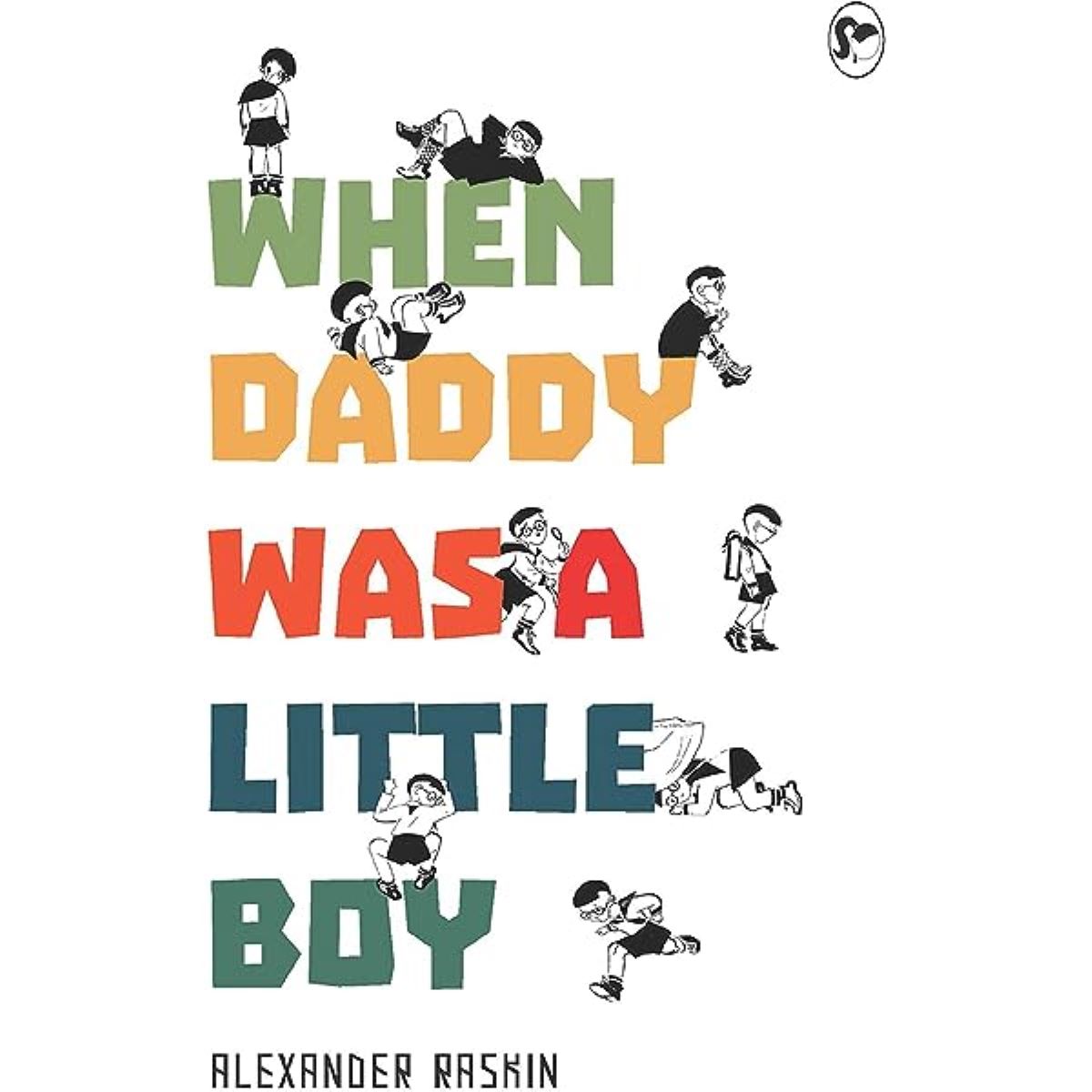Introduction
Welcome to the exciting world of creating children’s eBooks! Digital books for kids have become increasingly popular, offering a fun and interactive way to engage young readers. Whether you’re an aspiring author, an illustrator, or simply passionate about storytelling, this guide will help you navigate the process of creating your very own children’s eBook.
With the advancement of technology and easy access to self-publishing platforms, anyone can now bring their imaginative stories to life. This article will provide you with valuable insights and practical tips to help you along your journey.
Children’s eBooks have unique requirements compared to traditional books. They need to capture the attention of young minds, be engaging, colorful, and interactive. Writing and illustrating for children requires a combination of storytelling skills, creativity, and an understanding of child development.
In this guide, we will cover everything from finding the perfect idea for your eBook to publishing and promoting your creation. Together, we will explore the key steps involved in the process of crafting a compelling and enjoyable eBook for children.
Whether you are creating a picture book, an educational eBook, or an interactive adventure, the principles discussed here will apply. So, let’s dive in and embark on this exciting journey of creating a children’s eBook that will captivate young readers worldwide.
Finding an Idea for Your Children’s eBook
When it comes to creating a children’s eBook, finding the perfect idea to capture young imaginations is crucial. The key is to think like a child and tap into what interests and excites them. Here are some tips to help you generate ideas for your children’s eBook:
- Draw from your own experiences: Think back to your own childhood and the stories, lessons, and emotions that resonated with you. Your personal experiences can serve as a great starting point for creating relatable and authentic stories.
- Explore children’s interests: Pay attention to what children love and find fascinating. This could be anything from animals and nature to superheroes and fantasy. By tapping into these popular themes, you can create stories that will capture the attention of young readers.
- Observe the world around you: Take a walk in a park, visit a museum, or simply people-watch in a crowded place. Keeping your eyes open to the wonders and quirks of the world can spark unique story ideas and inspire imaginative characters.
- Consider educational value: Children’s eBooks have the potential to entertain and educate at the same time. Think about incorporating educational elements into your story, whether it’s teaching about friendship, problem-solving, or introducing basic concepts like numbers and colors.
- Put a creative twist on classic stories: Retelling classic fairy tales or fables with a modern twist can be both engaging and familiar to young readers. Consider reimagining well-known stories or introducing new characters to add a fresh and exciting spin.
- Involve the target audience: If you have children or have access to young readers, involve them in the process. Ask for their input, listen to their ideas, and see what resonates with them. The insights from your target audience can be invaluable in shaping your eBook.
Remember, the key to finding an idea for your children’s eBook is to think creatively and tap into the interests and imaginations of young readers. Allow yourself to explore different themes, brainstorm ideas, and let your creativity flow. Once you have a strong idea, you can move on to the next step of bringing your characters and storyline to life.
Creating Characters and Storylines
Now that you have found an idea for your children’s eBook, it’s time to bring your characters and storylines to life. Creating relatable and engaging characters is essential in capturing the hearts and imaginations of young readers. Here are some tips to help you develop your characters and storylines:
- Develop memorable characters: Think about the age range of your target audience and create characters that they can easily relate to. Consider their interests, fears, and desires to make your characters more authentic and relatable.
- Create a compelling conflict: Every good story needs conflict. Think about what obstacles your characters will face and how they will overcome them. This could be a personal struggle, a problem to be solved, or a lesson to be learned.
- Show character growth: Allow your characters to grow and evolve throughout the story. This can be through facing challenges, learning important lessons, or discovering new strengths. Showing character growth adds depth and makes the story more impactful.
- Engage all senses: Use vivid and descriptive language to engage the senses of young readers. Help them visualize the characters, settings, and actions. By appealing to their senses, your story will come to life in their imaginations.
- Create a captivating storyline: Your storyline should have a clear beginning, middle, and end. Keep the story flowing and maintain a balance between action and slower moments to keep young readers engaged from start to finish.
- Incorporate age-appropriate themes: Consider the age range of your target audience when developing your storyline. Tailor your themes and content to be suitable for the intended age group, ensuring it is relatable, educational, and entertaining.
- Inject humor and fun: Children love humor and fun, so don’t be afraid to sprinkle it throughout your story. Incorporate funny moments, wordplay, or playful language to keep young readers entertained and engaged.
- Read and revise: Once you have created your characters and storyline, read your eBook aloud to yourself or to children. Pay attention to their reactions and make revisions accordingly. This will help fine-tune your story and ensure it resonates with its intended audience.
Remember, children’s eBooks are meant to entertain, inspire, and engage young readers. By creating memorable characters and developing captivating storylines, you can craft an eBook that will leave a lasting impression on your readers.
Writing the Text
Once you have your characters and storylines in place, it’s time to focus on writing the text for your children’s eBook. Writing for children requires a special approach that keeps them engaged and entertained. Here are some tips to help you in the process:
- Keep it simple and concise: Use clear and straightforward language that young readers can easily understand. Avoid using complex vocabulary or convoluted sentences. Remember, simplicity is key to maintaining their attention.
- Create a rhythmic flow: Consider the rhythm and cadence of your writing. Children are naturally drawn to musicality and repetition. Incorporate rhymes, alliteration, or catchy phrases to make the text more engaging and memorable.
- Use descriptive language: Paint a vivid picture in the minds of young readers by using descriptive language. Help them visualize the characters, settings, and actions through sensory details. This will enhance their reading experience and immerse them in the story.
- Show, don’t tell: Instead of simply stating what is happening, show it through actions and dialogue. Engage young readers by letting them experience the story alongside the characters. This will make the text more dynamic and interactive.
- Inject emotions and empathy: Children connect deeply with characters who experience and express emotions. Use the power of emotions to create a strong bond between the readers and the characters. Explore themes of friendship, empathy, and resilience to teach important life lessons.
- Maintain a consistent voice: Establish a consistent narrative voice throughout your eBook. Whether it’s first-person or third-person, ensure that the tone and voice remain consistent. This will create a sense of familiarity and cohesiveness for young readers.
- Consider text placement: Pay attention to the placement of the text on each page. Balancing the amount of text with the illustrations is crucial. Avoid crowding the pages with too much text, as it can overwhelm young readers and distract from the overall reading experience.
- Read aloud and revise: After writing the text, read it aloud to ensure that it flows smoothly and is enjoyable to listen to. Revise any awkward phrasing, repetitive words, or confusing sentences. Reading aloud will help you catch any issues and refine the text.
Writing the text for your children’s eBook requires careful consideration of language, rhythm, and engagement. By following these tips, you can create a captivating and enjoyable reading experience for young readers.
Illustrating Your eBook
Illustrations are an integral part of a children’s eBook, as they bring the story to life and capture the imagination of young readers. Here are some tips to help you with illustrating your eBook:
- Create a consistent visual style: Decide on a cohesive visual style that complements your story. Whether you prefer bold and vibrant colors or soft pastels, make sure that the illustrations throughout your eBook have a consistent look and feel.
- Visualize the characters and settings: Take the time to visualize your characters and the settings they inhabit. Create sketches or mood boards to help develop their appearance. Consider their expressions, body language, and surroundings to enhance their portrayal.
- Engage young readers with dynamic illustrations: Capture the attention of young readers by incorporating dynamic illustrations. Use varying sizes, angles, and perspectives to create visual interest and depict action scenes in an engaging way.
- Show diversity and inclusivity: Represent a diverse range of characters to reflect the real world. Include characters from different cultural backgrounds, abilities, and experiences. This will foster inclusivity and help young readers connect with a wider range of individuals.
- Balance illustrations and text: Ensure a harmonious balance between the illustrations and text. The illustrations should enhance the story and clarify the text, rather than merely replicating it. Leave room for the text to breathe and consider how the two elements interact on each page.
- Seek professional assistance if needed: If you’re not an illustrator yourself, consider working with a professional illustrator to bring your vision to life. Collaborating with an illustrator can elevate your eBook and ensure high-quality visuals that resonate with young readers.
- Test the illustrations with your target audience: Share the illustrations with children in your target age group and observe their reactions. Pay attention to their engagement, emotions, and level of understanding. This feedback can provide valuable insights and help you refine your illustrations.
- Use the appropriate file formats: When preparing your illustrations for digital publishing, ensure that you use the appropriate file formats, such as JPEG or PNG. These formats are compatible with most eBook platforms and maintain the quality of your illustrations.
Remember, illustrations are a vital component of a children’s eBook and contribute significantly to its appeal. By creating captivating and visually consistent illustrations, you can enhance the reading experience and ignite the imagination of young readers.
Formatting Your eBook
Formatting your children’s eBook is essential to ensure a seamless and enjoyable reading experience for young readers. Here are some key considerations and tips to help you with formatting your eBook:
- Choose the right file format: Select the appropriate file format for your eBook, such as EPUB or MOBI. These formats are commonly used and compatible with various e-reader devices and platforms.
- Organize your content: Structure your eBook in a logical and organized manner. Divide it into chapters or sections, and include a table of contents for easy navigation. This helps young readers find their way through the story and locate specific sections.
- Use readable fonts: Select fonts that are easy to read on digital screens. Opt for clear and legible typefaces, avoiding overly decorative or intricate fonts. Consider using larger font sizes to accommodate the reading needs of young children.
- Incorporate appropriate text formatting: Use formatting options to enhance the readability of the text. Utilize bold and italics sparingly to emphasize certain words or phrases. Break up longer paragraphs into shorter sentences or bullet points for better visual appeal.
- Include high-quality images: If your eBook features illustrations or images, ensure that they are of high quality. Optimize the images for digital viewing, maintaining a balance between file size and resolution to prevent slow loading or pixelation.
- Consider interactivity: Explore the option of adding interactive elements to enhance the reading experience. This could include clickable links, interactive quizzes, or animated elements that engage young readers and immerse them further in the story.
- Test your eBook on different devices: Check how your eBook appears on various e-reader devices and platforms. Ensure that the formatting, layout, and illustrations display correctly across different screen sizes and orientations.
- Proofread and edit: Before finalizing your eBook, thoroughly proofread and edit the text to correct any spelling, grammar, or formatting errors. Typos and inconsistencies can detract from the overall reading experience, so take the time to ensure a polished final product.
- Consider accessibility features: Make your eBook accessible to a wider range of readers by considering accessibility features. This includes providing alternative text for images, ensuring sufficient color contrast, and enabling text-to-speech functionality.
By formatting your eBook with careful consideration for readability, organization, and compatibility, you can create an engaging and user-friendly experience for young readers. Take the time to fine-tune the formatting to ensure that your eBook is visually appealing and accessible to its target audience.
Adding Interactivity
Adding interactivity to your children’s eBook can make the reading experience more engaging and interactive. By incorporating interactive elements, you can capture the attention of young readers and immerse them further in the story. Here are some ways you can add interactivity to your eBook:
- Clickable objects: Include clickable objects within your eBook’s illustrations or text. Young readers can tap on them to reveal hidden content, trigger animations, or activate sound effects. This adds a touch of excitement and exploration to the reading experience.
- Interactive quizzes or puzzles: Integrate interactive quizzes or puzzles that young readers can solve within your eBook. This not only entertains them but also encourages critical thinking and problem-solving skills.
- Audio narration: Include an audio narration feature that allows young readers to listen to the story as they read along. This can be especially beneficial for early readers or those who prefer auditory learning.
- Character customization: Provide options for young readers to customize the appearance of the characters in your eBook. This interactive feature allows them to engage with the story on a personal level and make it more relatable.
- Interactive maps or timelines: If your eBook involves a journey or a historical timeline, include interactive maps or timelines that young readers can interact with. This helps them visualize the progress of the story and gain a better understanding of the narrative.
- Virtual pop-up elements: Incorporate virtual pop-up elements that surprise and engage young readers. These visual surprises can enhance the storytelling experience and create moments of delight and wonder.
- Gamification elements: Introduce gamification elements, such as earning badges or unlocking achievements, as young readers progress through the eBook. This adds an extra layer of excitement and motivation to keep them engaged.
- Interactive animations: Bring your illustrations to life with interactive animations that respond to touch or gestures. This interactive feature helps young readers connect with the characters and immerse themselves in the story.
- Multi-language support: Consider including multi-language support within your eBook, allowing young readers to switch between different languages. This promotes language learning and inclusivity among diverse readers.
Remember, the key to adding interactivity to your children’s eBook is to enhance the reading experience and engage young readers in a meaningful way. Use interactive elements thoughtfully and ensure they align with the story and enhance its themes and educational value.
Designing the Cover
The cover of your children’s eBook is the first impression your readers will have, and it plays a crucial role in capturing their attention and sparking their curiosity. Designing an eye-catching and appealing cover is essential to attract young readers. Here are some tips to help you design a captivating cover:
- Understand your target audience: Consider the age range and interests of your target readers. The cover should resonate with them and reflect the genre or theme of your eBook.
- Use vibrant and appealing colors: Choose colors that are visually appealing to children. Bright and vibrant colors can attract attention and create a sense of excitement.
- Create a focal point: Make sure your cover has a clear focal point that draws the reader’s attention. This could be the main character, a story element, or a visually striking illustration.
- Use high-quality illustrations or images: If your cover features illustrations or images, ensure they are of high quality and have a professional look. This will convey the quality and value of your eBook.
- Include the title and author’s name: Display the title of your eBook prominently and legibly. Make sure it is easy to read, especially in thumbnail size. Include your name or pen name as the author to establish credibility.
- Choose appropriate fonts: Select fonts that are visually appealing and readable, especially for young readers. Keep the typography playful and engaging, avoiding overly decorative or hard-to-read fonts.
- Balance text and visuals: Ensure a balance between the visual elements and the text on your cover. Avoid overcrowding and make sure the text is readable and doesn’t compete with the main illustration or focal point.
- Create a sense of imagination and wonder: Tap into the imagination of young readers by incorporating elements that evoke wonder and spark curiosity. This can be achieved through magical landscapes, fantastical creatures, or imaginative scenarios.
- Consider the eBook thumbnail: Remember that your cover will also appear as a thumbnail in online stores or libraries. Ensure that the design and text are readable even in a smaller size.
- Test and gather feedback: Show your cover design to your target audience and gather feedback. Listen to their opinions and make adjustments if necessary. This will help ensure that your cover resonates with its intended audience.
Designing the cover of your children’s eBook requires careful consideration of visuals, colors, typography, and target audience preferences. By creating an eye-catching cover that aligns with your eBook’s theme and resonates with young readers, you can instantly capture their attention and encourage them to explore your story.
Publishing Your Children’s eBook
Once you have completed the writing, illustrating, and formatting of your children’s eBook, it’s time to consider the publishing process. Publishing your eBook allows you to share your creation with a wider audience. Here are the key steps to help you publish your children’s eBook:
- Choose a publishing platform: Research and select a suitable publishing platform for your eBook. Popular options include Amazon Kindle Direct Publishing (KDP), Apple Books, Barnes & Noble Press, and Kobo Writing Life.
- Prepare your eBook files: Format your eBook files according to the specifications of your chosen publishing platform. This may include converting your manuscript into the required file format (such as EPUB or MOBI) and optimizing your illustrations or images.
- Write a compelling book description: Craft an engaging and informative book description that entices potential readers. This is your chance to capture their interest and provide a peek into the story and characters.
- Set a competitive price: Research similar eBooks in your genre and set a competitive price for your eBook. Consider factors such as length, complexity, illustrations, and the target audience when determining the right price point.
- Submit your eBook for publishing: Follow the guidelines provided by the publishing platform to upload and submit your eBook for review. Be sure to double-check the file format, cover image, metadata, and any other required elements.
- Review and edit: Once your eBook is published, review the final version thoroughly on different devices or e-reader apps. Look for any formatting or readability issues and make necessary corrections. Continuously monitor customer reviews and feedback to address any concerns or make improvements.
- Create an author profile and marketing materials: Establish yourself as an author by creating an author profile on the publishing platform. Utilize this platform to share information about yourself, your other works, and links to your website or social media. Also, create captivating marketing materials such as teasers, trailers, or social media graphics to promote your eBook.
- Generate buzz and promote your eBook: Implement marketing strategies to generate buzz and promote your eBook. Leverage social media platforms, blogs, book review sites, and online communities to reach your target audience. Consider offering discounts, organizing giveaways, or engaging in author interviews and guest blogging opportunities to increase visibility and interest.
- Maximize exposure with additional distribution: Consider enrolling your eBook in additional distribution programs or platforms, such as Kindle Unlimited or Smashwords. This can expand your eBook’s reach and increase the chances of discovery by a wider audience.
- Continuously engage with your readers: Cultivate a relationship with your readers by engaging with them through social media, email newsletters, or a website/blog. Encourage feedback, respond to reviews, and interact with your audience to build a loyal reader base.
Publishing your children’s eBook is an exciting step in sharing your creative work with the world. By following these steps and implementing effective marketing strategies, you can increase your eBook’s visibility, attract readers, and create a lasting impact in the world of children’s literature.
Marketing and Promotion
Once your children’s eBook is published, it’s time to focus on marketing and promotion to reach and engage your target audience. Effective marketing is crucial in creating visibility, driving sales, and building a loyal reader base. Here are some strategies to help you market and promote your children’s eBook:
- Create a compelling author website: Establish a professional author website where readers can learn more about you, your eBook, and your other works. Include an attractive design, author bio, book descriptions, sample chapters, and links to purchase your eBook.
- Utilize social media platforms: Leverage social media platforms such as Facebook, Instagram, Twitter, and Pinterest to connect with your target audience. Share updates about your eBook, behind-the-scenes insights, promotional offers, and engaging content related to your eBook’s theme or genre.
- Connect with book bloggers and influencers: Reach out to relevant book bloggers, influencers, and online communities that cater to your target audience. Offer them a free copy of your eBook in exchange for an honest review or feature on their platform.
- Engage in guest blogging: Write guest articles or blog posts for popular websites or blogs within the children’s book niche. This enables you to reach new readers and establish yourself as an expert in your genre.
- Encourage reader reviews: Reviews play a crucial role in building credibility and attracting new readers. Encourage your readers to leave reviews on websites such as Amazon, Goodreads, and other eBook platforms. Offer incentives such as giveaways or exclusive content to encourage reviews.
- Create eye-catching visuals: Invest in creating eye-catching visuals such as book trailers, promotional graphics, and engaging book covers. Visual content tends to attract more attention and is highly shareable on social media platforms.
- Participate in online communities and forums: Join online communities and forums related to children’s books, parenting, or education. Contribute useful and relevant content, participate in discussions, and share your eBook when appropriate. Build relationships with like-minded individuals and potential readers.
- Offer promotional deals or discounts: Temporarily reduce the price of your eBook or offer limited-time promotional deals to attract new readers. Promote these offers through your website, social media platforms, and targeted online advertising.
- Attend book fairs and events: Participate in local or virtual book fairs, literary events, and author signings to connect with readers, network with other authors, and gain exposure. Display your eBook prominently and engage in conversations with attendees.
- Stay engaged with your readers: Maintain an active presence on social media by responding to comments, messages, and feedback from your readers. Foster a sense of community and make your readers feel valued and heard.
Remember, effective marketing and promotion are ongoing processes. Explore different strategies, track your progress, and adapt your approaches based on what works best for your target audience. By building a strong online presence, engaging with your readers, and implementing strategic marketing activities, you can increase awareness and drive the success of your children’s eBook.
Conclusion
Congratulations! You have reached the conclusion of this guide on creating and promoting your children’s eBook. As you embark on your journey as a children’s eBook author, remember that the process requires creativity, attention to detail, and a deep understanding of your young audience. Here’s a recap of the key points covered:
First and foremost, finding an idea for your children’s eBook is vital. Draw inspiration from your own experiences, explore children’s interests, and consider educational value. Once you have a solid idea, focus on creating memorable characters and compelling storylines. Engage young readers with descriptive language, emotions, and character growth.
As you write the text, keep it simple, rhythmic, and visually engaging. Illustrations play a significant role in capturing young imaginations, so ensure they are consistent, dynamic, and diverse. Formatting your eBook is equally important to enhance the reading experience, so choose the right file format, organize your content, and use readable fonts.
Adding interactivity can immerse young readers further, from clickable objects to audio narration and interactive quizzes. Designing a captivating cover is crucial to attract attention and convey the essence of your eBook. When it comes to publishing and marketing, choose the right platform, create a compelling book description, and implement various marketing strategies to generate buzz and engage with your target audience.
Remember, the world of children’s eBooks is ever-evolving. Continually seek feedback from young readers, adapt your approach, and keep up with industry trends. Stay engaged with your readers, foster a strong online presence, and pursue opportunities for growth and learning.
Now, armed with this knowledge and a vibrant imagination, it’s time for you to let your creativity soar and bring your children’s eBook to life. Embrace the joy of storytelling, and watch as your words and illustrations foster the love of reading and imagination in young minds.
Best of luck on your journey to creating a captivating and unforgettable children’s eBook!

























